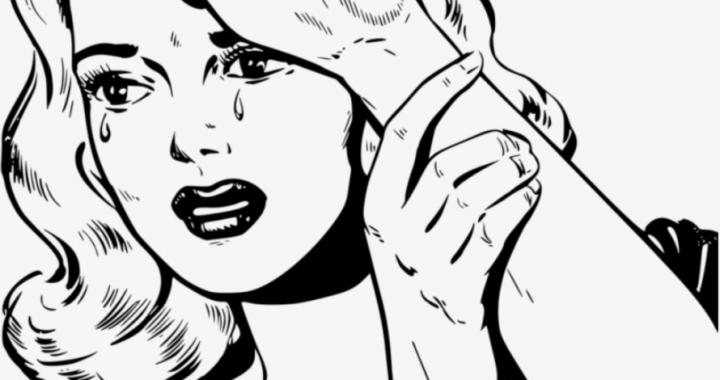In this chapter we transition from the skeletal-structure of plot, to filling in the organs of a story: scenes.
Scenes, claims Mr Bell, are the building blocks. (Sure, tell me more, mister!) They paint the plot. They immerse us into the story. And . . . he says a few other things too.
First, scenes are not summary, ye ole Show, Not Tell. Next, scenes have three ingredients: scenes proper (action), sequels (reactions), and beats (moments of set-up and deepening). All the rules of LOCK still apply. For example, you have a lead who is cleaning her bedroom. It’s taken her weeks, since she hates doing it, but she can’t live in a pig sty forever. (So far, set-up, which we could write quickly as summary.) Smelling the chemicals, on her hands and knees, she comes across a fat mother cockroach. (Beat, set-up.) She must react, but before reacting, maybe she ponders it, or examines it, or considers her role as arbiter of life and death. (Another beat, deepening.) She squishes the bug. (Action.) And then, as she raises her hand, she freaks out. (Beat.) The bug is still alive. (Beat.) Now . . . she must REACT! (Thus the story continues.)
Next, scenes must be HIP. Mr Bell tells us all scenes must begin with a hook. In the above example, we do not begin with a hook, but with exposition. A little boring. What if we began with the smell of the chemicals the lead uses to clean, plus the color. This vivid image could segue into her ruining nails, or her waiting so long, or how she enjoys the smell, gets her a little high. Whatever. But you want something emotional as a hook, something that grabs the reader. The I in HIP is intensity. The scene must be intense. I imagine this as applying a filter to your picture. More saturation, or totally black and white, or cropping, just something.
Consider this: While cleaning, she saw a cockroach . . . Yawnsville. Sometimes we need more. So, gas it up, try this: Almost done, she thinks. Wait. Is that a smudge? A shadowy flash? She leans closer, holding her hair, in order to inspect the space behind her trash can. Hey, a critter. Legs. Antennae. Brown, black . . . gooey orange. Pellets everywhere. Eggs. Squirming. No! It’s a roach!
Much better, eh? Mr Bell suggest rating intensity on a scale of 0 to 10, just to get objective about our scenes. Never be at 0, he says, and keep your 10s to a minimum. Otherwise there will be no way to tell up from down, left from right, if it’s all intense. Think heroin. Or like my professor put it, if you bang the piano keys all with the same intensity . . .
Lastly in HIP, is prompt: basically, give our minds something to ponder at the end of a scene. A rush of dopamine. Something to make us want to turn the page. Think Game of Throne cliff hangers. A telenovela pregnancy revealed. Charlie’s golden ticket to the Chocolate Factory. The replicant getting away with its first murder in the opening scene of Blade Runner. All these scene-endings make us want to keep watching, reading, learning. But we must be prompted.
. . .
I’m excited about the exercise here. It’s a “pull a book from your shelf” exercise! Pull one at random, and pick any scene. Here I asked Ela to pick one: Abel Posse’s Vivir Venecia, a memoir about one diplomat’s reassignment to decadent 1970s Venice, while he struggles to produce a second novel, after having written a wildly successful first. “Will it be as good?” he wonders. Meanwhile he dines with fascinating world-renowned celebrities, and painfully but beautifully describes his son, soon pass away.
Deep breath. Let’s analyze.
Cruzo la calle Paradiso y encuentro un cine pequeño, olvidado, donde pasan El doctor Zhivago, que vi hace años. Sentí que me gustaría ver los paisajes de Rusia, los horrores revolucionarios, reencontrar algo de Moscú donde vivimos tres años y nació Iván. La sala estaba vacía y el film había entrado en su segunda mitad. No más de una docena de cabezas se veían en la penumbra. La nieve resplandecía en la pantalla (el protagonista llega refugiado a un pueblo estepario llamado Varykino con su familia y se instala en una vieja propiedad abandonada donde solían antes de la Revolución pasar los veranos).
Hacia la derecha de la sala casi vacía, en un lugar demasiado lateral, la luza iluminó dos cabezas y un resplandor rubión. Me distraje de la película. Se me ocurrió que eran Andreina y Brodsky. El pelo castaño oscuro y lacio, el relumbrón del pelirrojo Brodsky. En ese lateral podían cuchichear. Brodsky debió haber expresado la voluntad de ver esa pelicula famosa sobre el mundo del que había sido felizmente expulsado. Tuve la confirmación: cuando el viejo Zhivago vuelve a Moscú, en tiempos sin Stalin, ve desde una tranvía la figura de alguien que pudo ser Lara, la mujer de su vida perdida en la hecatombe revolucionaria. Forcejea para descolgarse del vehículo y sufre el infarto del final.
En ese momento antes del final, el ambre alto dejó a la mujer y caminó hacia la salida.
Yo también salí antes del fin casi como para no toparme e incomodar a Andreina. Ella ya seguramente se despegaba de la implacable Venecia convencional. Arriesgaría ya sin cuidarse. Se reencontrariían en su refugio y hablarían horas de Pasternak, de los revolucionarios y víctimas. Y se abrazarían. Y caerían, pero no sobre la nieve. Yo mismo ya la imaginé según los chismes de Laurentis o el venenoso Alberico d’Alondra, los más chismosos de las reuniones en el Griti.
WOW!! I picked a short chapter, so as to be able to copy it all. And damn. Talk about in media res. We begin with Posse, the author-narrator, entering a movie theater half-way through a screening of the Russian classic Dr Zhivago. He sets it up by describing his nostalgia for his three years in Moscow, where his son was born, but also his feeling to get away from the world of gossip and schmoozing that is Venice for a diplomat.
It’s dark, there is no one in there — and all of this is written with about a 4 or 5 intensity, almost summary, very lazy. Until, WHAM! We are hit with a glimpse off to the side, the light of the movie (the white snow of Moscow) reflecting over the profiles of two folks who the author recognizes. One is of the famous Russian poet Brodsky, and the other a socialite woman who is married and causes nothing but drama in his circle.
Throughout the book, it’s implied that the author likes her very much, although he himself if married. So this discovery doesn’t just suggest social consequences, but personal ones too. If she was so open all along, then all the gossip about her was true, and maybe the author will try something on her. Or, I’m also wondering, as a reader, should he tell the woman’s husband? If not, he will have to keep his crush’s secret a secret.
Later, during a heart attack scene in the movie, the poet Brodsky leaves the theater early, most likely to not be seen exiting with the woman. Then, just as slowly, the author leaves too, and for the exact same reason, to not make things awkward. It’s a beautiful moment of reaction from the author. And I’d say this whole page is a reaction scene, full of emotion, an ambiguity. The author is either made stronger by the fact that he holds this secret over his crush, or weaker by the fact that he will never be as interesting as Brodsky to this socialite woman.
So, we started at 4/5 and we end at about a 6/7, so intense. And with a strong prompt: what will happen next, between them personally, or among the socialites? The very last line imagines this for us. The author pictures the next gossip session with other socialites, judging the woman, always expecting her to be cheating. End.




